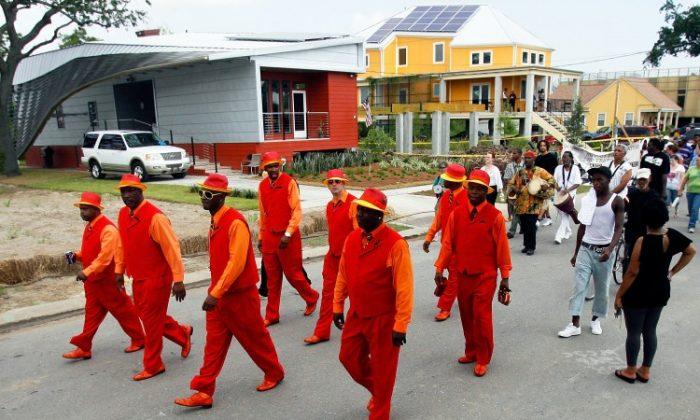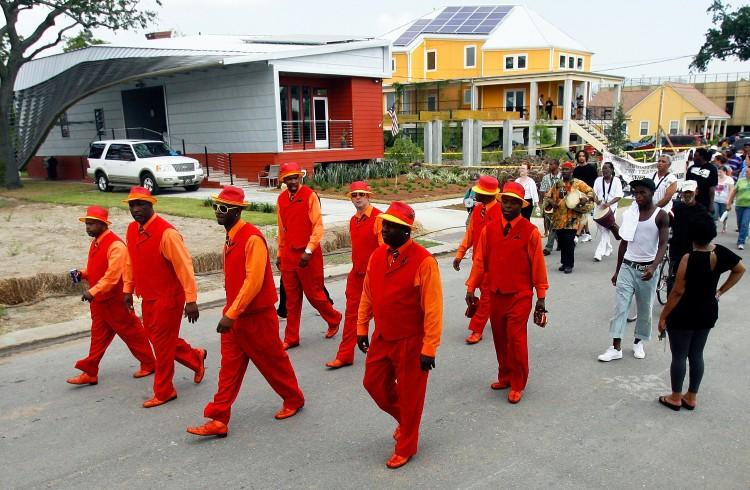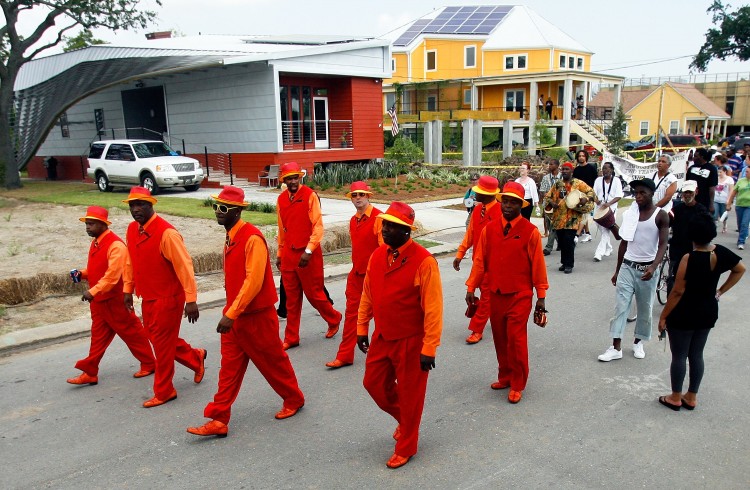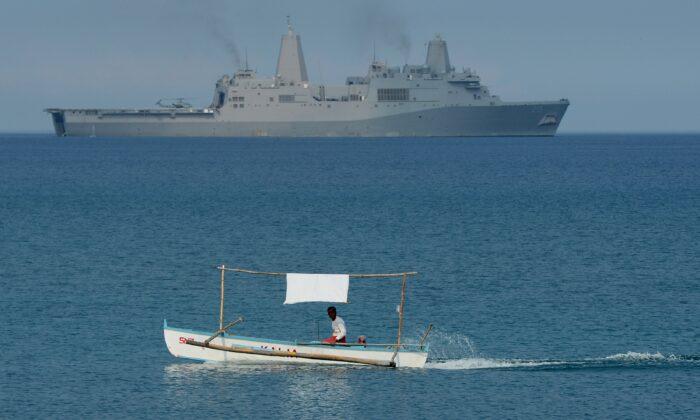WASHINGTON—This week marks the seventh anniversary of Hurricane Katrina, the costliest natural disaster and among the deadliest hurricanes in U.S. history. While the disaster identified gaping holes in U.S. disaster preparedness and many gaps have since been plugged, new kinds of challenges are testing government agencies.
Nearly 2,000 people lost their lives after Hurricane Katrina crossed the Gulf Coast Aug. 29, 2005. Many lives were lost as a result of the storm surge, which hit Louisiana and Mississippi particularly hard, breaching the New Orleans levee system and flooding 80 percent of the city and surrounding area; much of it already below sea level. According to the National Oceanic and Atmospheric Administration (NOAA), the estimated cost of the damage to the Gulf Coast, runs as high as $125 billion.
Much has been done to study what went wrong in the management and rescue effort surrounding Katrina. The size of the disaster tested emergency procedures across local, state, and federal agencies.
Weather forecasters clearly identified the danger Katrina presented days earlier and yet evacuation was not enacted until the day before it hit. Federal and state agencies were blocked by policies preventing a united and coordinated plan of action; information was not shared across agencies; and chains of command were little articulated.
According to Harvey E. Johnson Jr., (USCG, retired vice admiral) and former deputy administrator and chief operating officer of FEMA, there have been great gains. When Hurricane Gustav, a near repeat of Katrina, landed on the Louisiana coast in 2008, New Orleans was a ghost town, he said. Several million people had been evacuated and over 35,000 of those who needed assistance were moved to safety, including 66 critical care patients. No lives were lost.
There were “26 prescripted missions” of likely disaster scenarios and action plans following Katrina, he told a forum on disaster preparedness at the Washington-based Heritage Foundation on Aug. 14.
Policies since Katrina have allowed the coordinated roll out of Department of Defense (DOD) forces. They allow government and private transportation systems—planes, trains, helicopters, and buses—to be better coordinated and facilitate evacuations. Technology is now widely used in emergencies for modeling and geospatial information.
“There is just a readiness now, almost a desire by the DOD forces that have geospatial, to bring it to bear in a disaster,” Johnson said.
Critically state and federal forces also work more closely together.
Speaking at the forum, Paul Stockton, assistant secretary for homeland defense for DOD, pointed to clashes of authority during Katrina, particularly between the National Guard, which comes under the jurisdiction of the governor, and the military, which is under the command of the president.
Governors now appoint a member of the National Guard to wear two hats and oversee both the National Guard and the military during a crisis, which was most evident during last year’s Hurricane Irene.
“It will provide unity of effort and close coordination between state and federal forces, so noticeably absent in Katrina and so obvious in Irene,” he told the forum.
New Kinds of Challenges
While many problems have been ironed out, the threat to large, densely populated areas continues to raise the bar for preparing for a major catastrophe, Stockton said.
“It keeps me up at night, the gap between where we are and where I would like to be,” he told the forum.
He named earthquake vulnerabilities like the Cascadia Fault, which extends from Northern California to northern Vancouver Island, and the San Francisco Bay area, which includes the Hayward Fault and the San Andreas Fault.
He also spoke of the threat of an electromagnetic pulse (EMP) event that could occur either as result of solar storms or a military attack. An EMP could wipe out significant areas of the national electricity grid.
“The risk of cascading failure of critical infrastructure in ways that we might not even understand until the event occurs, that is what keeps me up at night,” he said.
Stockton said there were distinct possibilities that the electricity grid could be wiped out across states, not for a week as happened to devastating effect on the East Coast this summer, but for weeks or months.
The problems would be myriad, he said, noting that gas stations would not work and that cities like Memphis, that rely on electricity to pump their water from below the surface, would be in real trouble.
Other issues that need work are ensuring alternative sources of power, like generators and fuel supplies to run them; increasing communication with the private sector, which is usually responsible for electricity supplies; and empowering state and local governments to have their own contingency plans.
An accreditation process for search and rescue personnel from abroad was another area that was lacking, according to Stockton. He said help usually goes the other way, from America to other countries.
“We identified important opportunities for progress and we are continuing to work on that now,” he told the forum.
Dr. James Carafano, deputy director of the Kathryn and Shelby Cullom Davis Institute for International Studies and director of the Heritage Foundation’s Douglas and Sarah Allison Center for Foreign Policy Studies, said confidence in the effectiveness of government agencies, particularly defense, is a critical component of resilience for people in times of crisis. He said it was notably lacking during Katrina.
“A lot of time people don’t really need help. They can actually take care of themselves,” he told the forum, “They just need to know things are going to be ok ... that there is a structure there ... and that someone is going to take care of things,” Carafano said.
The Epoch Times publishes in 35 countries and in 19 languages. Subscribe to our e-newsletter







Friends Read Free